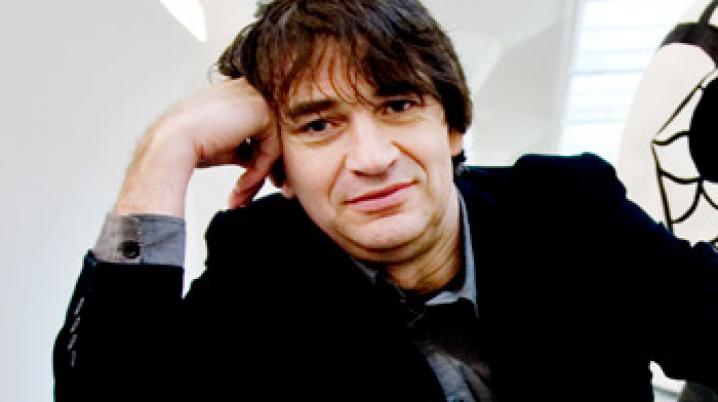
anecdotes on the job
Interview with Stijn Huijts
In this new series of interviews, SICA invites cultural professionals from the Netherlands, who have (or had) a project involving Brazil, to tell us a little bit about their history and to share inspiring experiences.
Our first guest is Stijn Huijts, commissioner and founder of the Made in Mirrors Foundation, and director of the Bonnenfantenmuseum in Maastricht.
Made in Mirrors Foundation develops cultural exchange between Brazil, the Netherlands, China and Egypt, with the core idea that one can learn about himself when mirroring with the other. A group of so-called MiMtendants work together creating residency projects and exhibitions that stimulate this idea. Instead of choosing the big city centres with already established and easier access to art, Made in Mirrors has its connections in cities that are “peripheral” in relation to big artistic centers. With this in mind, Stijn Huijts is the MIMtendant for the region of South Limburg (the Netherlands), Cristiana Tejo for Recife (in the North East of Brazil), Zhang Wei and Hu Fang for Guangzhou and Beijing (China) and William Wells for Cairo (Egypt).
Stijn Huijts tells us how he developed a curiosity about the Brazilian culture from a young age and how he founded Made in Mirrors.
This story begins when…
“I had a friend at school, who became an engineer and travelled the seven seas on a boat. Every once in a while I saw him and he told me that Brazil was one of the most beautiful places he has ever seen…”
Several years later, in 1995, Stijn became director of the museum Het Domein in Sittard. At the time, the City was developing a summer festival and playing with the idea of choosing a different country as a theme for each edition of the festival. “What will be the first country?, somebody asked. I already had the answer: Brazil!”
“I found myself some weeks later at the Brazilian embassy in The Hague”, says Stijn, where he met a Brazilian cultural commissioner/officer for the embassy who was from Pernambuco (in the North East region of the country).
With his advice, Stijn developed an exchange project with artists from Pernambuco. “This made sense, because Limburg is a periphery region in relation to Amsterdam and Pernambuco is also peripheral in relation to São Paulo and Rio de Janeiro”.
Everybody was happy with the first edition of the festival. The next year, they decided to choose Brazil again. “Brazil is a big country, offering endless subjects”, Stijn explains. Thus, the next project was an exhibition of photography in São Paulo and Rio de Janeiro.
Some years later, in 2004, he became the curator for the Dutch participation at the biennial in São Paulo. In 2005, he went to China for an orientation trip, where he met the initiators of the Vitamin Creative Space. They realized that they shared the same ideas, Guangzhou also being a periphery, and they talked about starting a cooperation.
While discussing possibilities of working together, they concluded that the idea of learning by mirroring shouldn’t be restricted to China, and they decided to look to other parts of the world. “Then, of course, I thought about Pernambuco”. Subsequently, in 2006, Stijn contacted the director of the Museu de Arte Moderna Aloisio Magalhães ( MAMAM) in Recife.
In 2007 there was a get-together in Guangzhou, and this marked the official start of Made in Mirrors. During this meeting it was agreed that they needed a fourth partner in the Arabic world. So, two years later, William Wells in Cairo was invited to become part of the Made in Mirrors.
When asked about how we could place Brazil in his career as a curator, he says that since the project Made in Mirrors was created, the relation with Brazil continued in his professional work so far. Traces of his passion for Brazilian culture are left in the institutions he worked for. Het Domein has a graffiti by Os Gêmeos and there is another one in the city of Heerlen. Projects developed last year serve as other good examples, such as the exhibition “Casa como Convém” by Brazilian artists Jonathas de Andrade and Cristiano Lenhardt and the project “Lost Park” by Dutch artist Maria Barnas.
About future plans for the Made in Mirrors Foundation, Stijn says that “it is a wonderful network and I intend to use it in the future; I think it is very important to continue this exchange, although we don’t have money for the Made in Mirrors right now. But I hope we can change this situation.”
To conclude, Stijn explains that his motivation for doing all these projects comes from his sense that “the cultural diversity is at stake. You should regard or keep the diversity in order to discover the similarities. Celebrate the differences and discover the similarities by doing so.”

